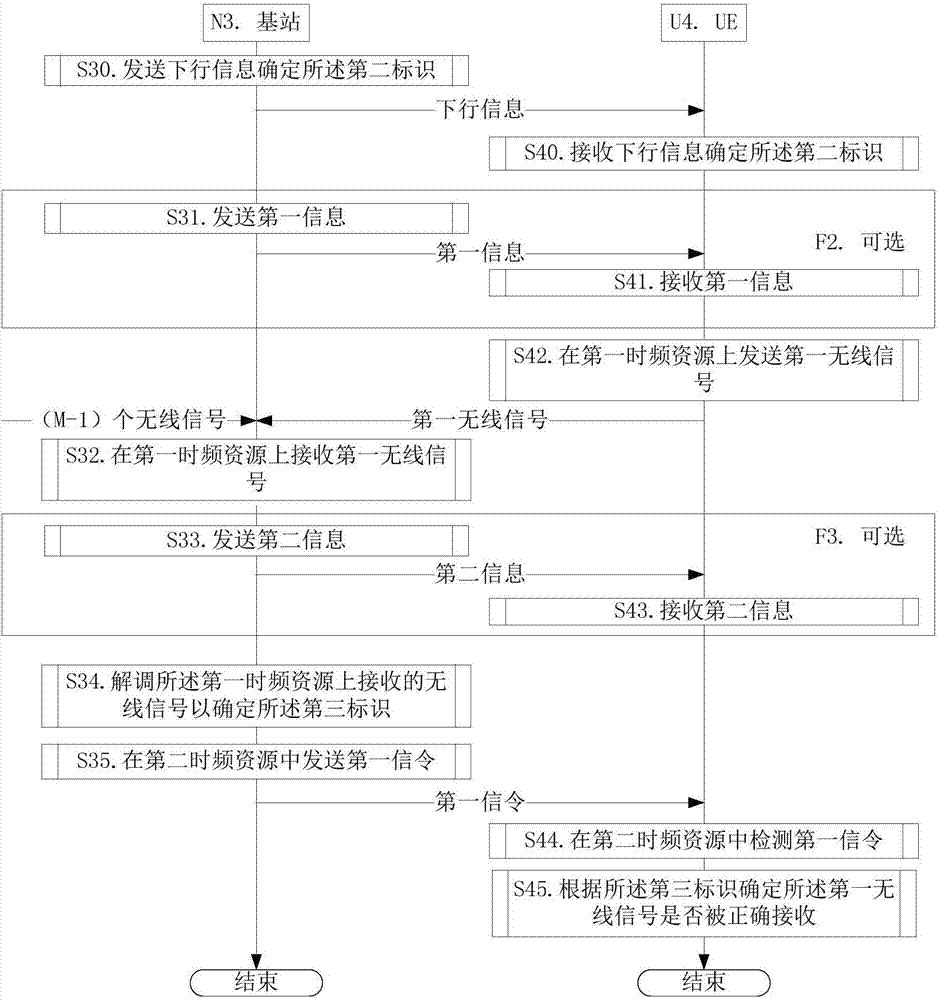Method applied to wireless communication UE and wireless communication base station, and device
A wireless communication and wireless signal technology, applied in wireless communication, signaling distribution, sustainable communication technology, etc., can solve problems such as low transmission delay
- Summary
- Abstract
- Description
- Claims
- Application Information
AI Technical Summary
Problems solved by technology
Method used
Image
Examples
Embodiment 1
[0166] Embodiment 1 illustrates the flowchart of uplink transmission, as attached figure 1 shown. attached figure 1 In , the base station N1 is the maintenance base station of the serving cell of the UE U2, and the steps identified in the blocks F0 and F1 are optional.
[0167] for base station N1 , send the first information in step S10, receive the first wireless signal on the first time-frequency resource in step S11, send the second information in step S12, and demodulate the first time-frequency resource in step S13 The received wireless signal is used to determine the third identifier, and in step S14, the first signaling is sent in the second time-frequency resource.
[0168] for UE U2 , in step S20, at least one of {the first identification, the second identification} is determined by itself, in step S21 the first information is received, in step S22 the first radio frequency is sent on the first time-frequency resource In step S23, the second information is rec...
Embodiment 2
[0176] Embodiment 2 illustrates the flow chart of uplink transmission, as attached figure 2 shown. attached figure 2 , the base station N3 is the maintenance base station of the serving cell of the UE U4, and the steps identified in blocks F2 and F3 are optional.
[0177] for base station N3 , sending downlink information in step S30 to determine the second identity, sending the first information in step S31, receiving the first wireless signal on the first time-frequency resource in step S32, sending the second information in step S33, and In step S34, the wireless signal received on the first time-frequency resource is demodulated to determine the third identifier, and in step S35, the first signaling is sent in the second time-frequency resource.
[0178] for UE U4 , receiving downlink information in step S40 to determine the second identity, receiving the first information in step S41, sending the first wireless signal on the first time-frequency resource in step S...
Embodiment 3
[0186] Embodiment 3 illustrates a schematic diagram of a given resource pool according to the present invention. Wherein, the given resource pool is one of {the first resource pool, the second resource pool}.
[0187] Such as image 3 As shown, the given resource pool is continuous in both the time domain and the frequency domain.
[0188] As a sub-embodiment, the given resource pool is the first resource pool.
[0189] As a sub-embodiment, the given resource pool is the second resource pool.
PUM
 Login to View More
Login to View More Abstract
Description
Claims
Application Information
 Login to View More
Login to View More - R&D
- Intellectual Property
- Life Sciences
- Materials
- Tech Scout
- Unparalleled Data Quality
- Higher Quality Content
- 60% Fewer Hallucinations
Browse by: Latest US Patents, China's latest patents, Technical Efficacy Thesaurus, Application Domain, Technology Topic, Popular Technical Reports.
© 2025 PatSnap. All rights reserved.Legal|Privacy policy|Modern Slavery Act Transparency Statement|Sitemap|About US| Contact US: help@patsnap.com



